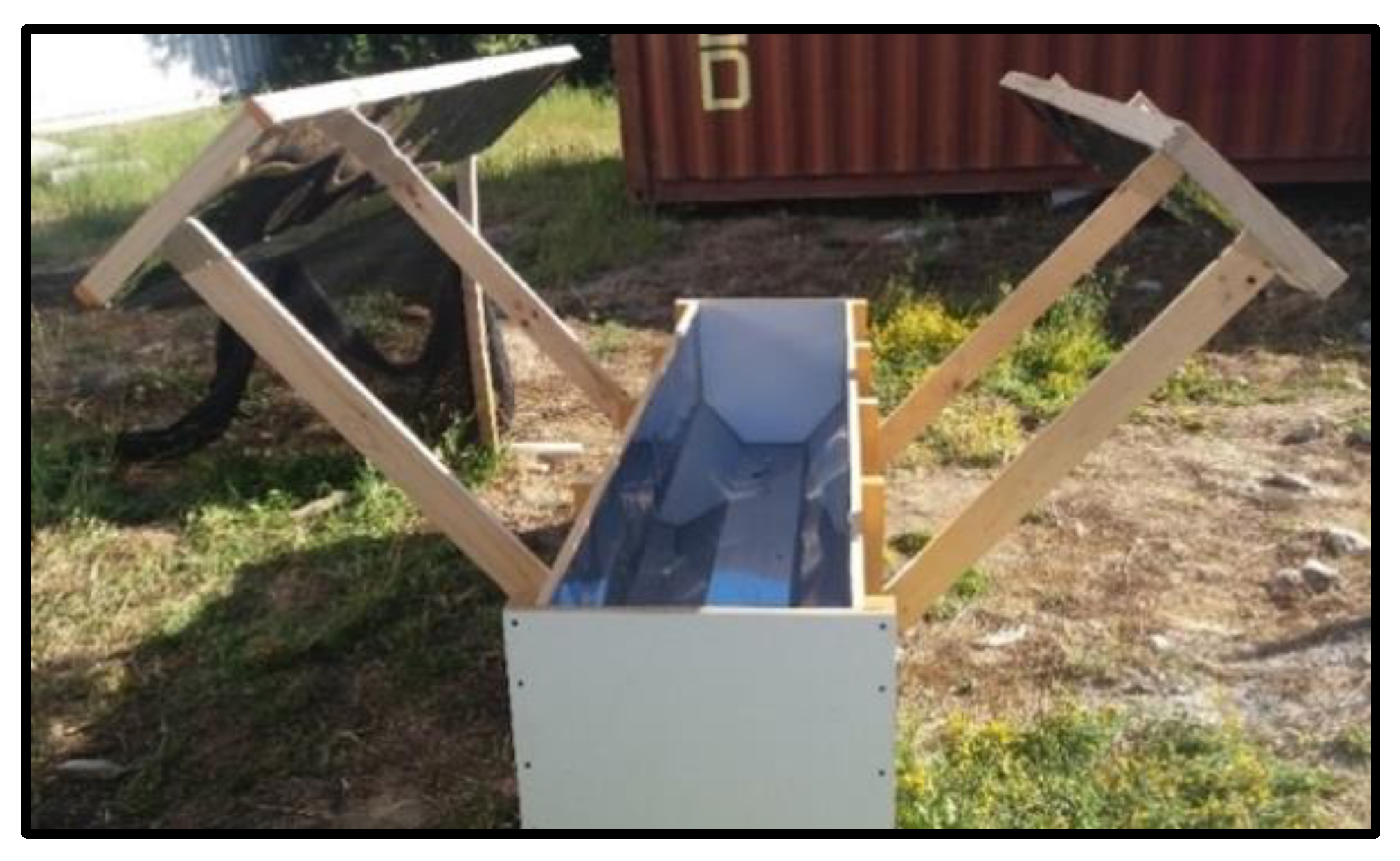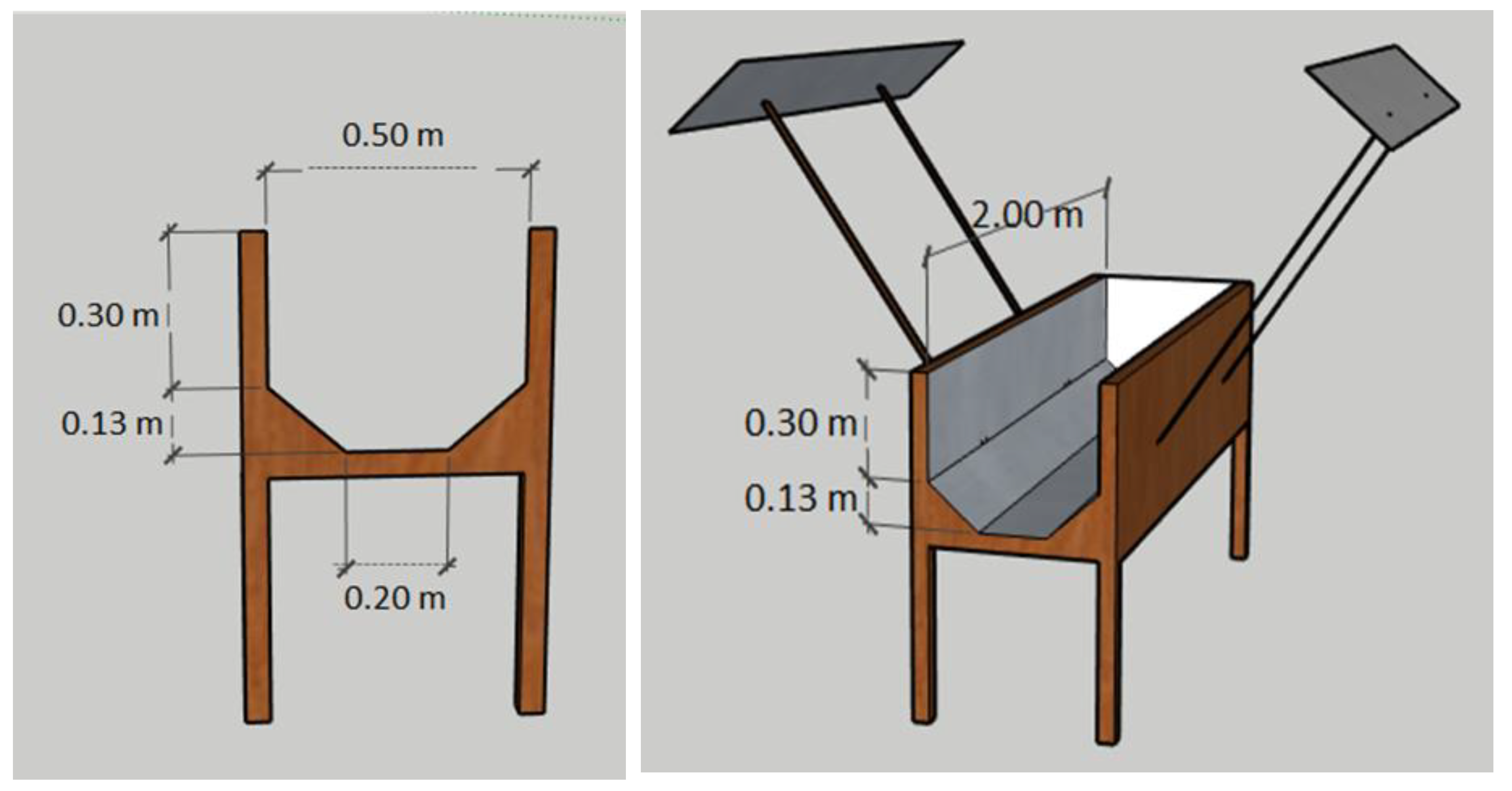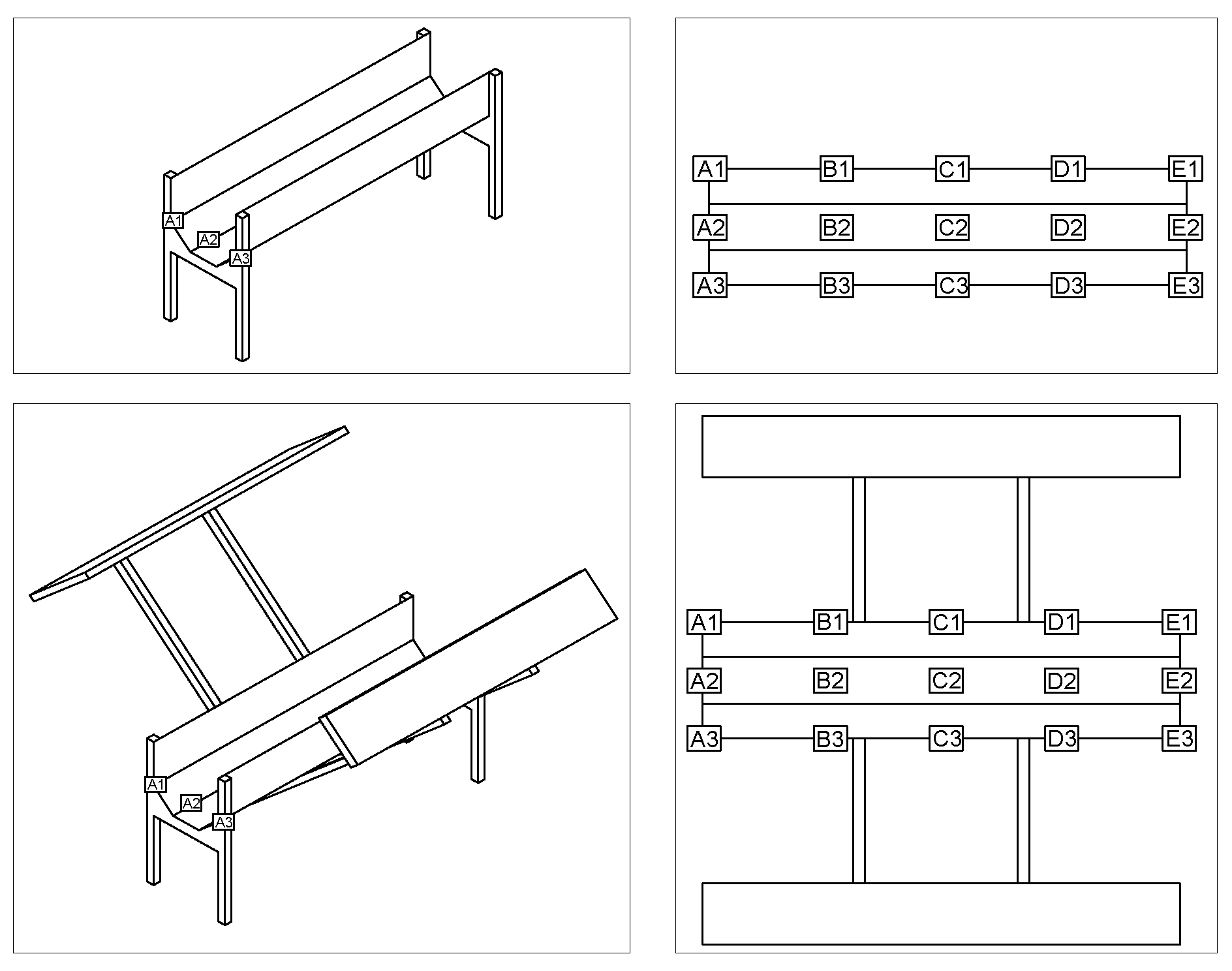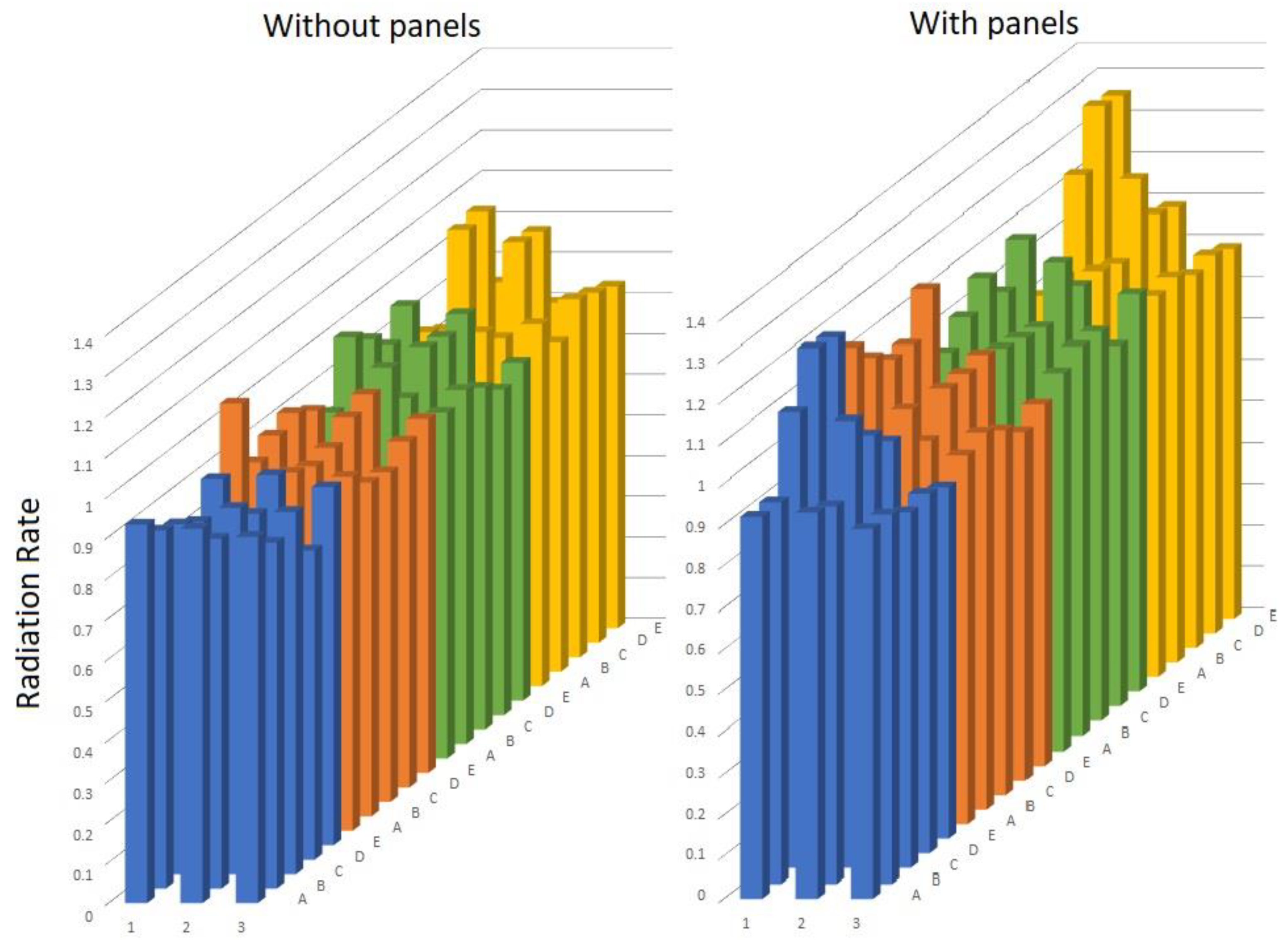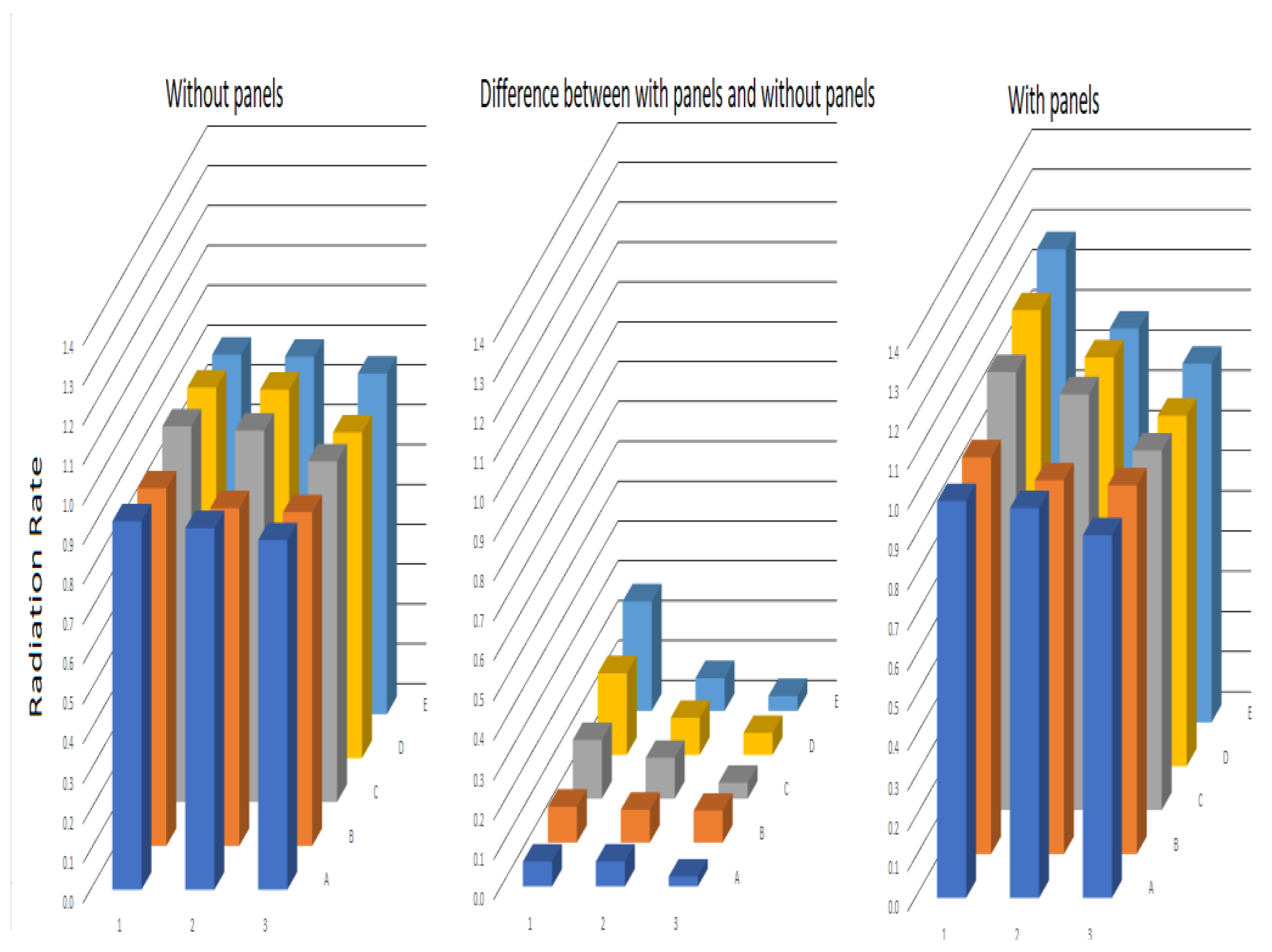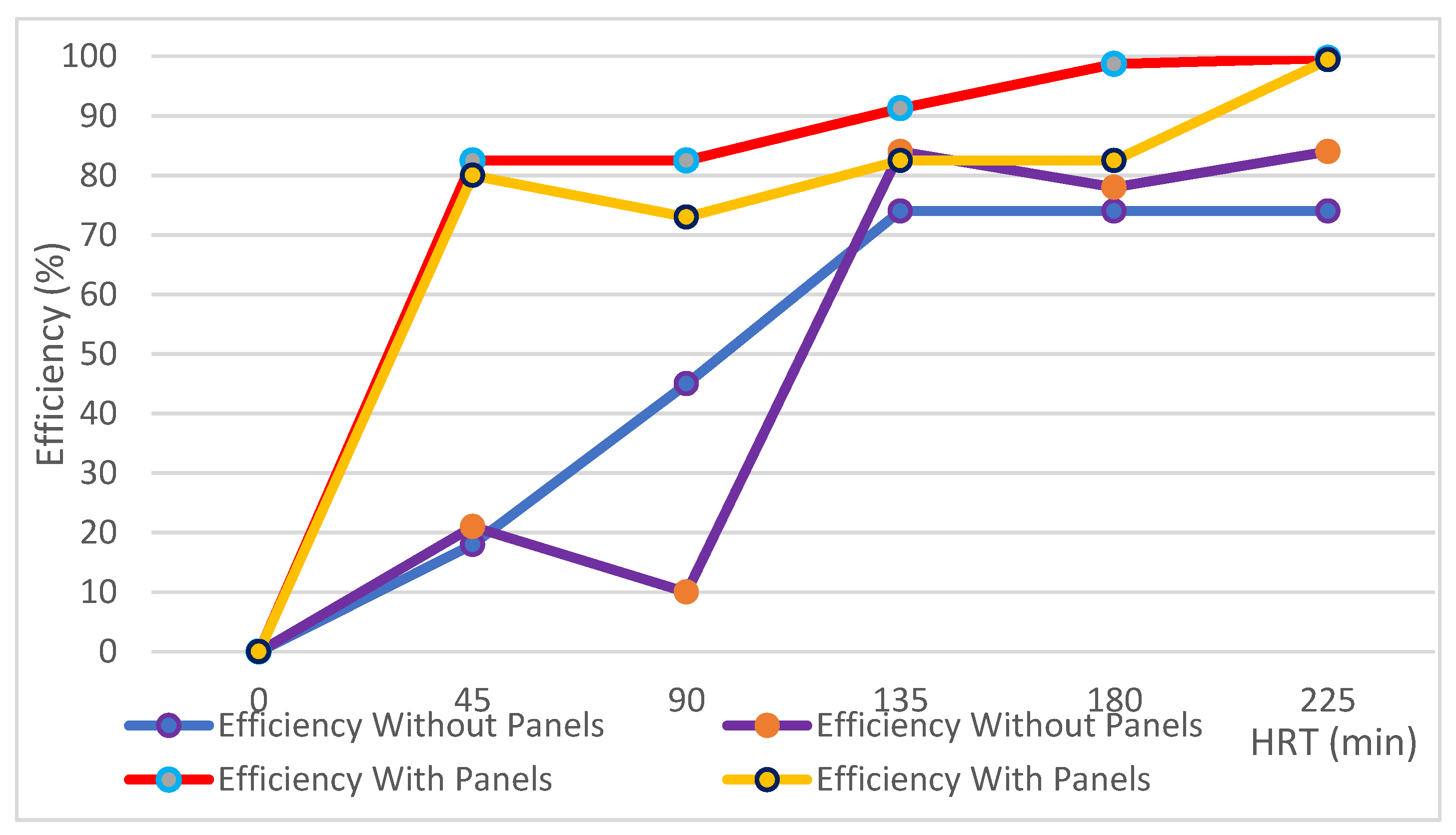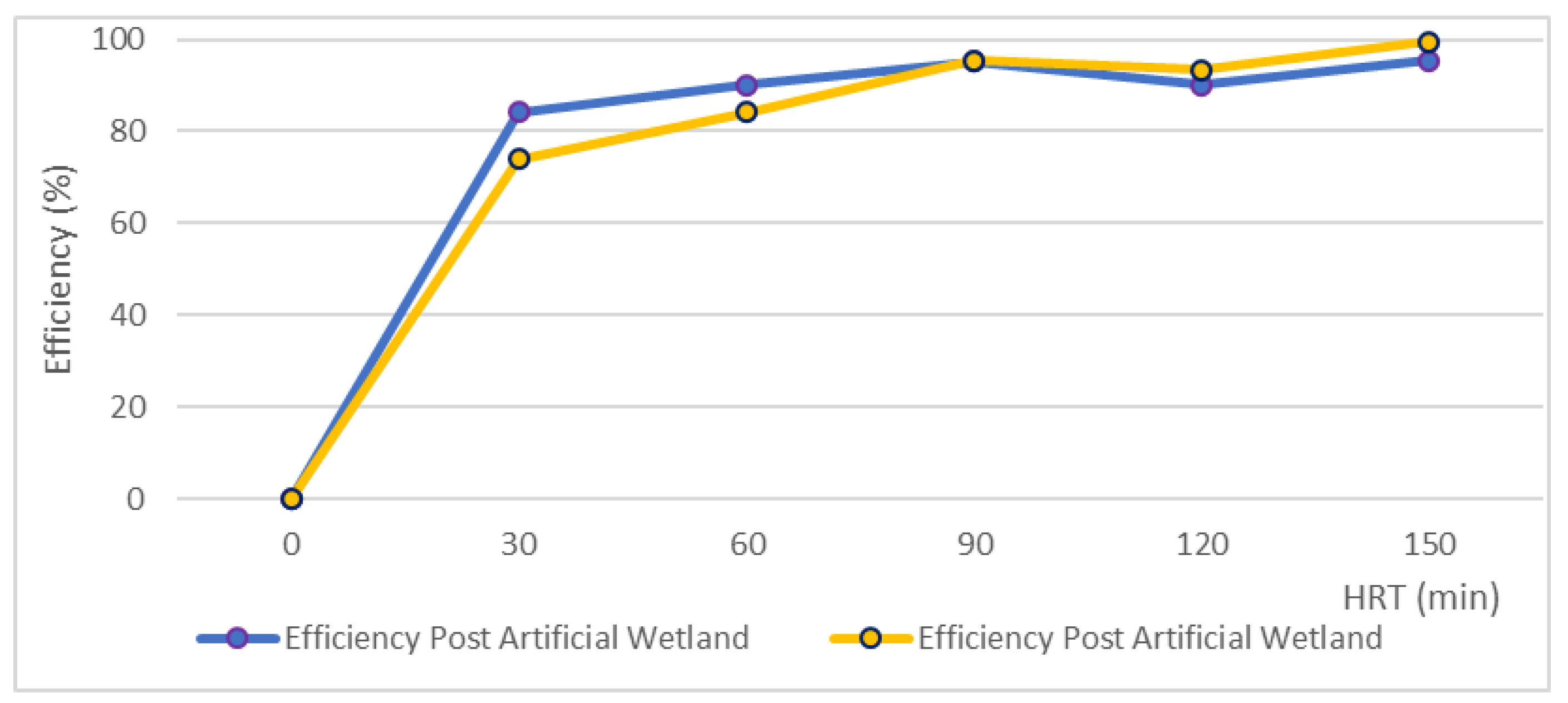1. Introduction
The effects of climate change will affect the dynamics of our society and economy [
1]. The magnitude of such impacts will differ depending on the individual capabilities and the collective responses, scientific advances, institutional capacities, and quality of community debate [
2,
3]. The hydrological cycle generates a series of ecosystem services, including water supply, climate regulation, vegetation, and determining the quality of life for human communities that inhabit the watersheds [
4]. The hydrological cycle is especially relevant in zones with a considerable rural population dedicated to agricultural activities [
5]. Climate change affects the hydrological cycle causing droughts in Chile and Latin America. Thus, the treatment of wastewater, including disinfection and its subsequent reuse in agriculture, is necessary and contributes to avoiding groundwater contamination and enabling cost-savings for nutrient removal [
6].
The disinfection treatments are classified as conventional, advanced, and natural processes. The natural processes include wastewater system stabilization ponds and constructed wetlands [
7].
Chlorination is the most conventional disinfection treatment. However, the toxicity of the by-products generated by chlorination in wastewater should be considered. The regulatory agencies insist on the use of ecologically sustainable alternatives [
8]. The availability and costs constitute a problem. Thus, a cleaner and cheaper technology for the disinfection of water is necessary in developing countries [
9].
The disadvantages of disinfection by chlorination promoted and potentiated disinfection by ultra violet (UV) light. Currently, UV disinfection is a competitive alternative to chlorination [
10].
For the emerging UV disinfection solution of solar radiation, the albedo (a) is a relevant factor. The albedo (a) is defined as the ratio of reflected (upwelling) irradiance (Iu) with respect to the incident (downwelling) irradiance (Id), and is generally applied only for horizontal surfaces [
11]. The reflectivity may change depending on the incident angle of the irradiance on a non-horizontal surface [
12].
Materials with high albedo and emittance attain lower temperatures when they are exposed to solar radiation, reducing the transmission of heat to the environment [
13]. Research showed that irradiance measured on a horizontal surface is not proportional to irradiance on a vertical surface. The relation between the two depends on the orientation of the vertical surface, zenith angle, and wavelength. At short ultra violet B (UVB) wavelengths, the surfaces directed toward the solar azimuth received their maximum irradiances much closer to solar noon than the maxima for longer wavelengths [
14]. Bacterial inactivation in UV techniques, such as solar disinfection (SODIS), happens because photons may increase the amount of internal reactive oxygen species (ROS), such as hydroxyl radicals (OH) and superoxide radicals (O
2−). The attacks of ROS on different components of the cells are a primary source of oxidative damage to cells. Photons may damage the two essential enzymes of the defense system against intracellular oxidative processes, catalase and superoxide dismutase [
15].
A survey of pilot-scale studies investigating UV light as a combined sewer overflow (CSO) disinfectant, suggests that the correct application of UV light irradiation is an effective alternative to chlorination for CSO. The process of disinfecting with UV light appears to be strongly dependent on water quality. Thus, pretreatment of CSO before disinfection is a prerequisite to ensure UV light effectiveness [
16]. As an alternative technology, UV disinfection is gaining increasing popularity as it has been shown to effectively inactivate a wide range of pathogens, including the most problematic waterborne parasites, such as
Cryptosporidium and
Giardia [
17].
Approximately 5% of solar radiation is ultraviolet, with the maximum reported value around 5 mW/cm
2. The range of UV radiation lies between 100 and 400 nm and is divided into three categories: ultra violet A (UVA) (315–400 nm); ultra violet B (UVB) (280–315 nm); ultra violet C (UVC) (200–280 nm). UVC radiation is absorbed by the ozone layer as well as a proportion of the UV-B radiation; therefore, UVA and a portion of UVB radiation reach the earth’s surface [
18]. Although ultraviolet light is not yet widely used as a chemical disinfectant, like chlorine and ozone, there is considerable evidence that the UV method may become a reliable alternative to disinfecting wastewater [
19].
Human beings are pathogen incubators. Thus, if their metabolic wastes are treated in a chlorine wastewater treatment plant, which is not effective against
Cryptosporidium spp., or it is used at doses that have a minimal impact on
Giardia spp., the wastewater treatment plants can become major sources chlorine-resistant pathogens. These protozoan pathogens are extremely sensitive to UV, therefore, the advantages of UV in protecting water sources are evident [
20].
The innovative system developed in this paper is a type of natural disinfection technology. Constructed wetlands reduce the bacteriological load. The mechanisms to reduce bacterial populations include physical and chemical processes, such as the release of oxygen from plants and biological mechanisms, such as natural death, predation, and the action of antibiotic substances released by macrophytes [
21]. Tannic acid and gallic acid are secreted from the roots of many aquatic plants and disinfect their surroundings. In addition, the development of populations of bacteria in the rhizosphere with antibiotic properties (e.g.,
Pseudomonas) may also contribute to the removal of
Escherichia coli [
22].
Maturation ponds are generally oxygenated through photo-synthesis due to the relatively high optical clarity of effluents received from the optional pond, wetlands, or other wastewater treatment. It is assumed that an increase in dissolved oxygen would result in an increase in ROS formation and a corresponding increase in photo-oxidation [
23].
The maturation ponds possess a depth range of 0.6 m to 0.8 m. This condition is required because levels nearer to the surface of these ponds can receive enough solar radiation for bacterial inactivation. Light intensity decays as depth increases [
24]. The presence of algae in natural wastewater treatment systems can contribute appreciably to disinfection [
25].
A technology based on solar energy is SODIS, which requires a threshold of 500 W/m
2. The real efficacy of SODIS was tested by inactivating the total coliforms (TC) of
Escherichia coli (
E. coli). The exposure period was critical; in 2 days, complete microbial inactivation was achieved [
26]. The efficiency of solar disinfection (SODIS) for the inactivation of the total coliforms and
Escherichia coli in drinking water was tested in rural communities of the Guachochi Municipality, State of Chihuahua, Mexico. The test resulted in complete disinfection when placing transparent water bottles in the sunlight for the whole day, and the water temperature reached 50 °C [
27].
Based on preliminary work, a solar disinfection unit was designed and built. The unit was evaluated by the “
Centro Panamericano de Ingenieria Sanitaria y Ciencias del Ambiente (CEPIS)” in Lima, Perú. In 30 min in midday and light sunlight, the unit eliminated more than 99.99% of bacteria contained in highly contaminated water samples from two wastewater treatment plants [
28].
An innovative solar water pasteurizer was developed to directly heat the water by solar radiation using a “Parabolic Trough Concentrator” [
29]. The enhanced reactor reduced the exposure time required to achieve the lethal UVA dose, as compared to a compound parabolic concentrator (CPC) system with a concentration factor of 1.0. Doubling the lethal UVA dose prevented the need for a period of post-exposure dark inactivation and reduced the overall treatment time. By using this SODIS reactor, the disinfection can be carried out with a reduced exposure time. [
30].
For a solar disinfection (SODIS) reactor of methacrylate, a tube is placed along the linear focus of the CPC and is mounted at a 37° inclination to treat 25 L of water. For strong sunlight, complete bacterial inactivation occurred in under 6 h, with water temperatures less than 40 °C. Under cloudy conditions and low solar radiation, the water was disinfected in 7 h with water temperatures greater than 50 °C. Regrowth of bacteria occurred after 24 h following solar disinfection [
31].
A presence/absence detection method was developed to analyze
lettuce leaves sampled 24 h after watering for the detection of
E. coli. The absence of E. coli on most lettuce samples after irrigation with solar radiation-disinfected effluents (26 negative samples/28 samples) confirmed an improved safety of irrigation practices due to solar treatment [
32]. The photo-reactivation processes were compensated entirely by solar disinfection within a 120 min exposure time [
33].
Several technological attempts at disinfection based on solar radiation have been proposed. However, these treatments are not sufficiently functional. This manuscript presents the initial development of a new technology based on the use of solar radiation to disinfect treated wastewater, with a low cost of investment and operation. This technology will allow the reuse of wastewater and was patented in 2019 [
34].
The purpose of this manuscript is to expose the early results of this new technological development, which is cheap, easy to build, operate, and maintain, in the disinfection of treated wastewater. Preliminary results are shown to support it.
A comparative analysis of scenarios that progressively integrate the basal components of this technology, as well as the materiality, geometry, and reflector panels, is shown, using the radiation rate obtained measuring the solar radiation in the disinfection canal, the atmospheric solar radiation, and the elimination of total coliforms as the principal quantitative indicators.
